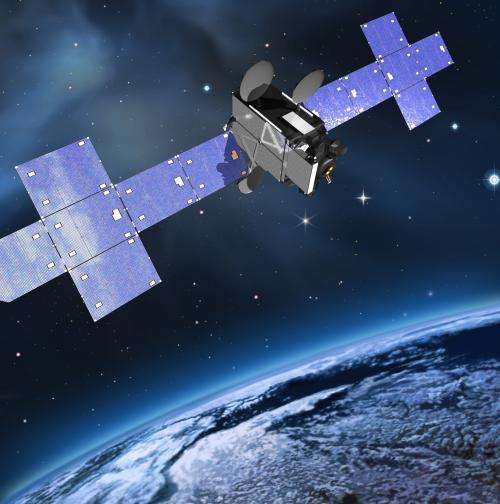Laser communication mission targets 2017 launch

NASA's next laser communication mission recently passed a Preliminary Design Review (PDR), another major milestone towards the launch of the Laser Communications Relay Demonstration (LCRD) scheduled for 2017.
The PDR is a major agency evaluation milestone of the engineering plan to execute the build and launch of LCRD onboard a Space Systems Loral commercial satellite. "The board concluded that the LCRD review was a resounding success," said Tupper Hyde, chairperson of the PDR. "They met all review success criteria and the LCRD team is ready to proceed with mission plans to conduct this ground-breaking demonstration."
The LCRD project is NASA's first long duration optical communications mission. This demonstration will build from NASA's highly successful Lunar Laser Communications Demonstration (LLCD) mission. LCRD will conduct a two-year demonstration of optical relay services to determine how well the system operates and collect long-term performance data. The Goddard team leads the project with significant support from MIT Lincoln Laboratory, NASA's Jet Propulsion Laboratory, and Space Systems/Loral (SSL).
Space laser communications technology has the potential to provide 10 to 100 times higher data rates than traditional radio frequency systems for the same mass and power. This has now been proven on NASA's LLCD mission. LCRD is a longer duration mission that will provide the necessary knowledge and experience to operate future mission critical optical communications systems.
The LCRD mission is a necessary technology development step that will allow NASA to go from LLCD's technology "existence proof" to demonstrating reliable optical services. "The LCRD team demonstrated that the mission design fulfills NASA requirements and the mission architecture will meet the agency's needs, goals and objectives," said Michael Weiss, project manager for LCRD. "We are very pleased that we are ready to proceed with flight hardware activities."
Last year NASA awarded Space Systems Loral (SSL) of Palo Alto, Calif., a $3 million contract to initiate the process of hosting the LCRD mission on a Loral commercial satellite. Positioning LCRD aboard the commercial communication satellite platform is a cost effective approach to place LCRD in orbit. The agreement marked the first time NASA has contracted to fly a payload on an American-manufactured commercial communications satellite.
When launched, NASA's technology demonstration payload will be positioned above the equator, a prime location for line-of-sight to other orbiting satellites and ground stations. The SSL satellite will provide the right location, space availability, and power systems needed to conduct the space laser communications tests.
More information: esc.gsfc.nasa.gov/267/LCRD.html
Provided by NASA's Goddard Space Flight Center



















